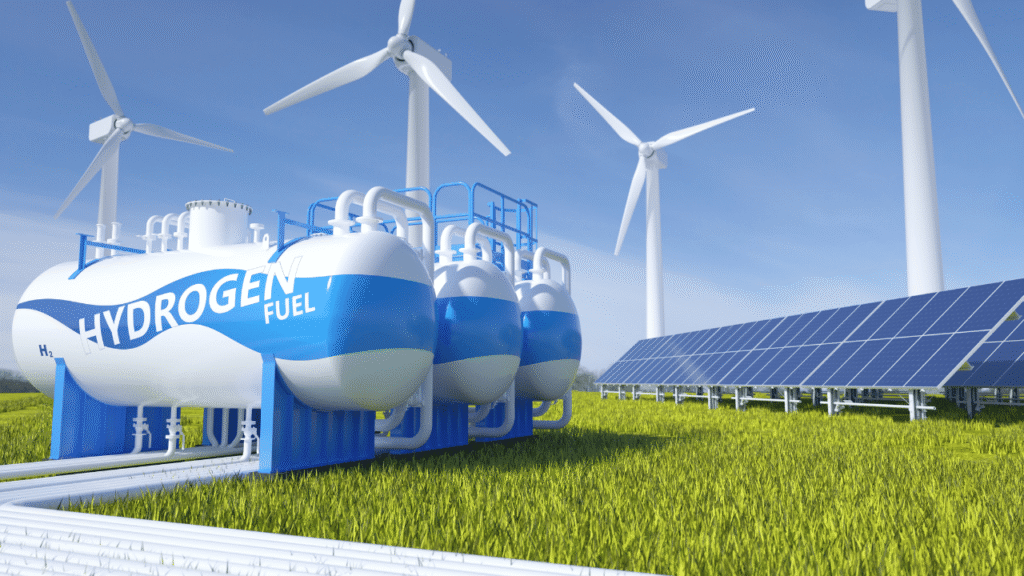In Summary
- Africa is projected to experience varying economic growth across its regions, with East Africa leading at 5.4%, driven by services, agriculture, and technology.
- Economic growth rates in Africa are influenced by factors like the expansion of renewable energy, the implementation of the African Continental Free Trade Area (AfCFTA), and the development of green industries.
- The industrial sector in Africa is expected to grow at a rate of 20% per annum, increasing its share of GDP from 13% to 32% by the end of 2025.
- There’s a push to increase the adoption of renewable energy technologies, with potential increases of 5-12% by 2045 through climate policies.
Deep Dive!!
The global economy is striving towards sustainability and Africa is steadily emerging as a key player in the United Nation’s race for green industrialization. Across the continent, governments, industries, and investors are embracing cleaner technologies, renewable energy sources, and environmentally conscious manufacturing practices to drive economic growth while preserving the future for generations to come.
As we approach the United Nations’ 2030 deadline, this transformation is no longer theoretical; it is unfolding in real time, reshaping Africa’s industrial landscape and positioning the continent as a hub for sustainable development.
African countries are charting new paths that align economic ambitions with environmental responsibility, combining industrial growth with environmental sustainability. The continent has consciously increased investment in renewable energy and adoption of green technologies in manufacturing and other sectors.
Here, we have highlighted the top 10 African countries leading the charge in green industrialization, showcasing how each nation is leveraging innovation, policy, and investment to redefine what industrial progress looks like in the 21st century.

10. Morocco
Morocco continues to expand its clean energy capacity, especially solar and wind and is integrating green hydrogen production into its industrial zones. The Noor Ouarzazate complex remains a flagship solar project, attracting both foreign investment and local manufacturing opportunities.
9. Zambia
Zambia leverages its hydropower infrastructure to support sustainable manufacturing, particularly in agro-processing and green steel production. The Zambian green industrial policy encourages forward integration from mining to finished goods, reducing carbon footprints.
8. Ghana
Ghana is accelerating the deployment of solar energy and adopting eco-textile practices within its textile manufacturing sector. In addition, it is implementing national programs to formalize recycling industries, fostering job creation and pollution reduction simultaneously.
7. Ethiopia
With the ongoing expansion of clean energy capacity, Ethiopia powers key industrial parks using solar and wind energy. These parks promote manufacturing activities for textiles, pharmaceuticals, and agribusiness, all powered by renewable sources.
6. Egypt
Egypt’s green agenda spans wind and solar energy projects, industrial wastewater recycling, and eco-friendly cement plants. The nation also leads in green hydrogen plans anchored by its strategic location and growing renewable infrastructure.
5. South Africa
South Africa is undergoing a green industrial shift in the mining, auto, and chemical sectors. Automotive manufacturers are increasingly assembling electric and hybrid vehicles, while mining companies are adopting renewable power and eco-mining technologies.
4. Kenya
Kenya’s green credentials stem from geothermal, wind, and solar energy developments. Recently, a green industrial park near Naivasha was launched, featuring modern factories powered by zero-carbon grids. Kenya is also pioneering sustainable agribusiness and green logistics innovations.
3. Namibia
Namibia is emerging as a solar-powered green economy hub. It’s home to solar-powered platinum refining plants and green hydrogen pilot projects. The government is positioning green exports as a core component of national economic transformation.
2. Mauritius
Mauritius positions itself as a model for clean industrialization, such as sustainable textile manufacturing and eco-friendly food processing. Heavy investment in solar and wind aims to power its industries sustainably, with growing green finance markets and ESG investment platforms backing these efforts.
1. Tunisia
Tunisia heads Africa’s green industrial movement by blending solar energy deployment, green steel manufacturing, EV component factories, water recycling, and logistics electrification. Export-oriented industries, such as automobiles, appliances, and textiles are harnessing low-carbon energy and circular economy principles. Strong government incentives and technology transfers from Europe further support Tunisia’s leadership.
https://www.africanexponent.com/top-10-african-countries-leading-in-green-industrialization-in-2025/


